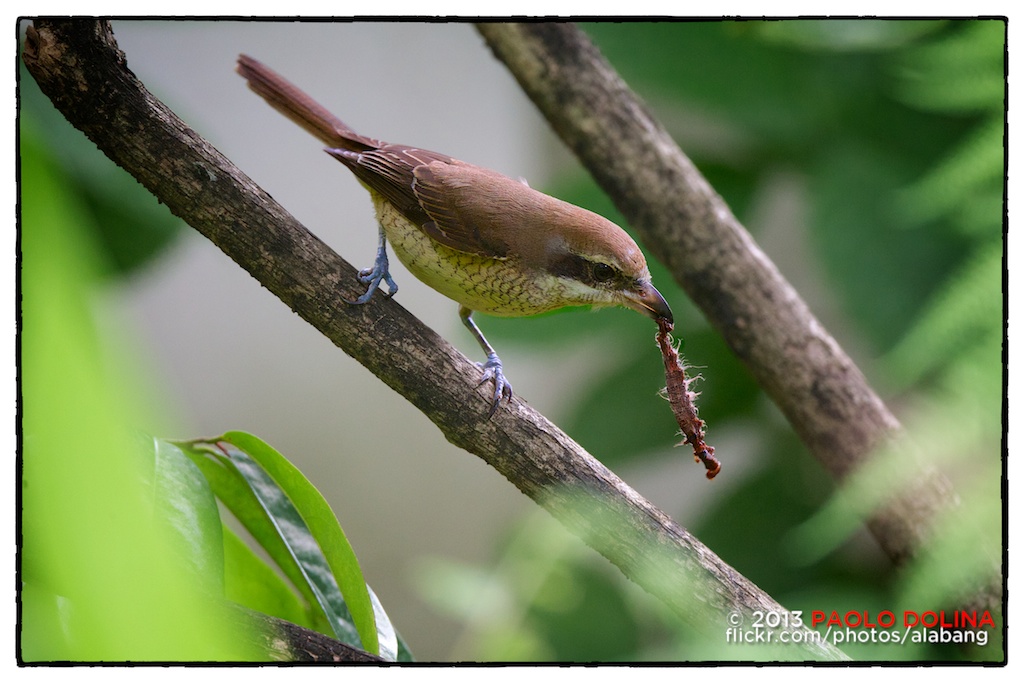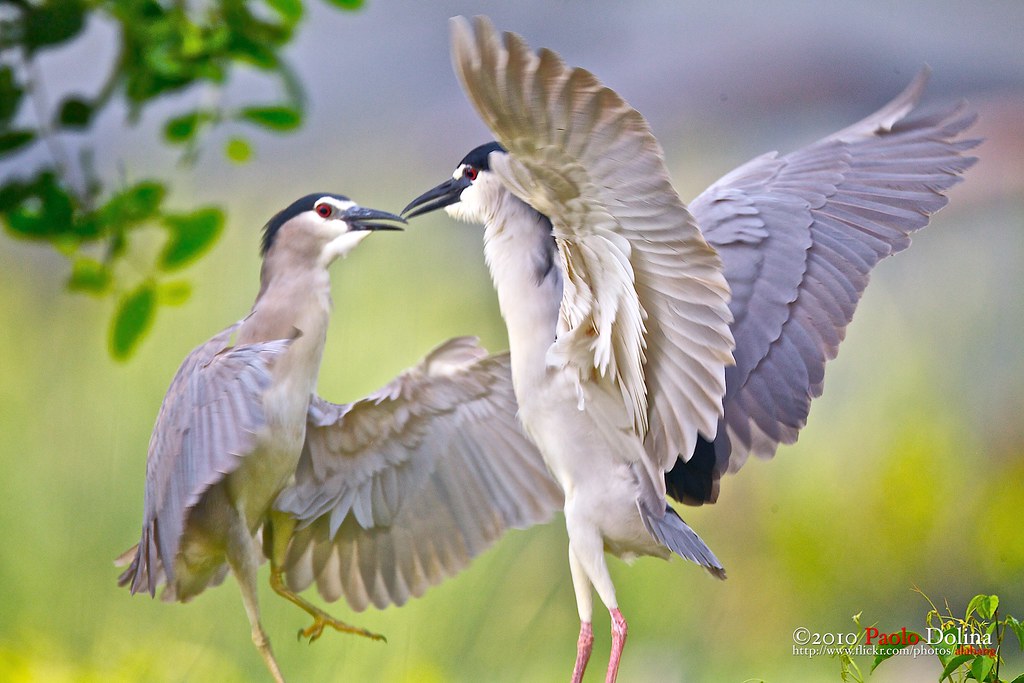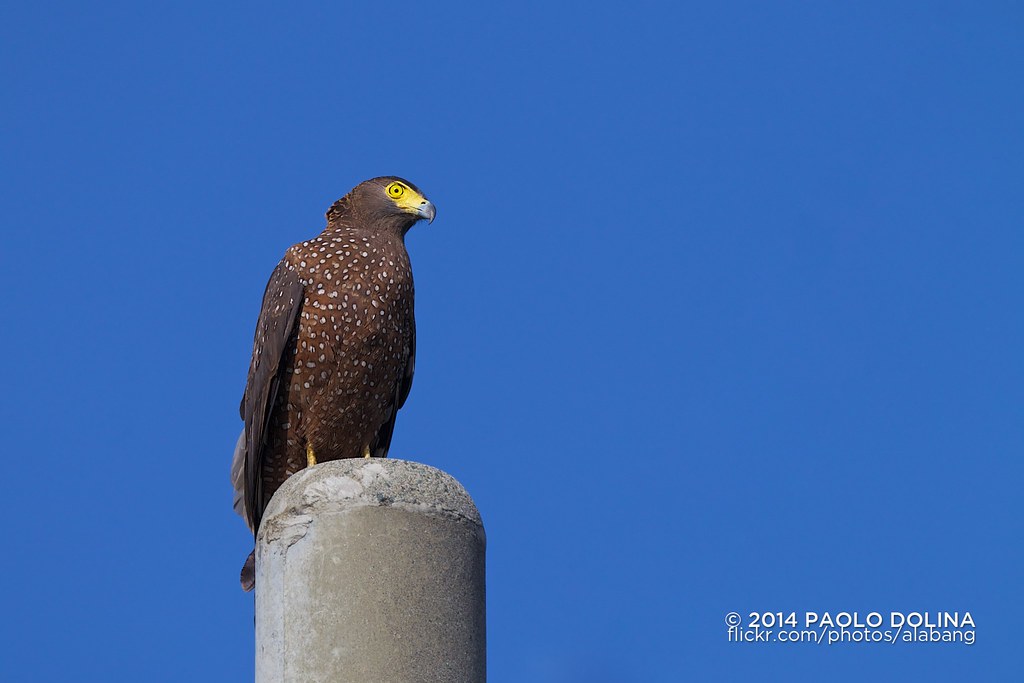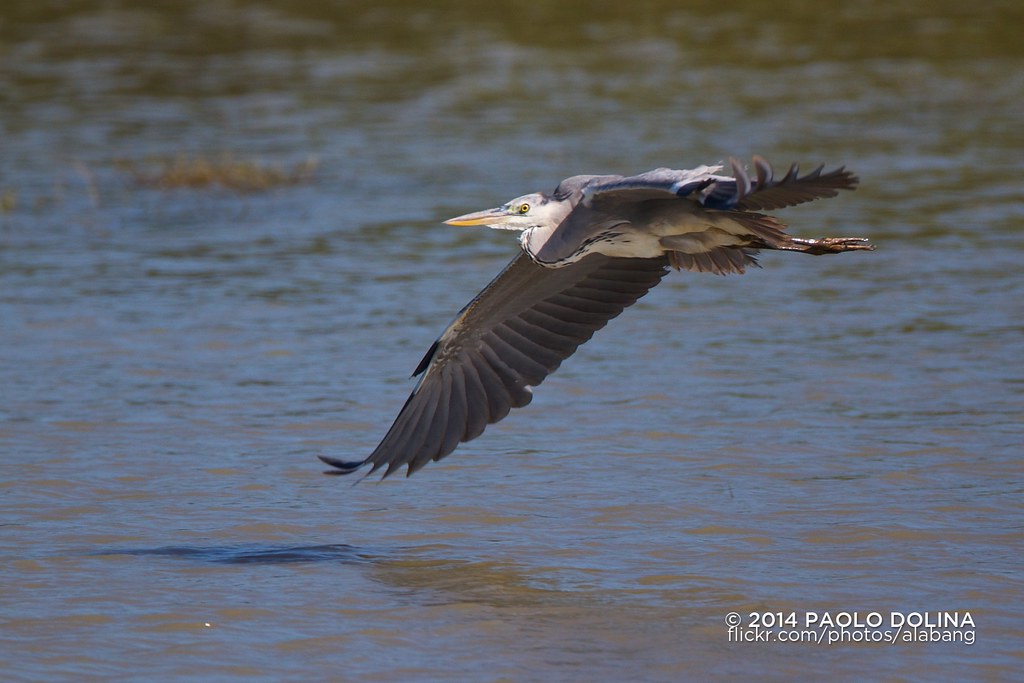Inspite of their abundance, I could not get a clear shot of this bird.
Results 1,051 to 1,060 of 1262
Thread: Bird photography
-
12-16-2013, 01:26 PM #1051Elite Member

- Join Date
- Aug 2007
- Posts
- 1,865
-
12-18-2013, 05:20 PM #1052
Time and patience burikoy.


Brown Shrike (Lanius cristatus) by alabang, on Flickr
The Brown Shrike is a migratory species and ringing studies show that they have a high fidelity to their wintering sites, often returning to the same locations each winter.[20][21][22] They begin establishing wintering territories shortly on arrival and their loud chattering or rattling calls are distinctive. Birds that arrive early and establish territories appear to have an advantage over those that arrive later in the winter areas.[23][24] The timing of their migration is very regular with their arrival in winter to India in August to September and departure in April.[25] During their winter period, they go through a premigratory moult.[20] Their song in the winter quarters is faint and somewhat resembles the call of the Rosy Starling and often includes mimicry of other birds. The beak remains closed when singing and only throat pulsations are visible although the bird moves its tail up and down while singing.[5][26]
The breeding season is late May or June and the breeding habitat includes the taiga, forest to semi-desert where they build a nest in a tree or bush, laying 2-6 eggs.[27]
They feed mainly on insects, especially lepidoptera.[28] Like other shrikes, they impale prey on thorns. Small birds and lizards are also sometimes preyed on.[29] A white-eye (Zosterops) has been recorded in its larder.[5] They typically look out for prey from a perch and fly down towards the ground to capture them.[30]
Source: Brown Shrike - Wikipedia, the free encyclopedia
Location: Muntinlupa - Wikipedia, the free encyclopedia
Settings: 1/400 ƒ/5.6 ISO 2500 800mm
-
12-20-2013, 05:59 AM #1053

Buff-banded Rail (Gallirallus philippensis) by alabang, on Flickr
The Buff-banded Rail (Gallirallus philippensis) is a distinctively coloured, highly dispersive, medium-sized rail of the family Rallidae. This species comprises several subspecies found throughout much of Australasia and the south-west Pacific region, including the Philippines (where it is known as Tikling), New Guinea, Australia, New Zealand (where it is known as the Banded Rail or Moho-pereru in Māori),[2] and numerous smaller islands, covering a range of latitudes from the tropics to the Subantarctic.
It is a largely terrestrial bird the size of a small domestic chicken, with mainly brown upperparts, finely banded black and white underparts, a white eyebrow, chestnut band running from the bill round the nape, with a buff band on the breast. It utilises a range of moist or wetland habitats with low, dense vegetation for cover. It is usually quite shy but may become very tame and bold in some circumstances, such as in island resorts within the Great Barrier Reef region.[3]
The Buff-banded Rail is an omnivorous scavenger which feeds on a range of terrestrial invertebrates and small vertebrates, seeds, fallen fruit and other vegetable matter, as well as carrion and refuse. Its nest is usually situated in dense grassy or reedy vegetation close to water, with a clutch size of 3-4. Although some island populations may be threatened, or even exterminated, by introduced predators, the species as a whole appears to be safe and its conservation status is considered to be of Least Concern.
Source: Buff-banded Rail - Wikipedia, the free encyclopedia
Taken: Los Baņos, Laguna - Wikipedia, the free encyclopedia
Settings: 1/200 ƒ/8 ISO 100 800mm
-
12-21-2013, 05:33 AM #1054

Black-crowned Night Heron (Nycticorax nycticorax) by alabang, on Flickr
The Black-crowned Night Heron (Nycticorax nycticorax), commonly abbreviated to just Night Heron in Eurasia, is a medium-sized heron found throughout a large part of the world, except in the coldest regions and Australasia (where it is replaced by the closely related Rufous Night Heron, with which it has hybridized in the area of contact).
Source: Black-crowned Night Heron - Wikipedia, the free encyclopedia
Location: Valenzuela, Philippines - Wikipedia, the free encyclopedia
Settings: 1/640 ƒ/5.6 ISO 640 800mm
-
12-24-2013, 07:41 PM #1055

Black-faced Spoonbill (Platalea minor) by alabang, on Flickr
This is the Black-faced Spoonbill, a very rare bird reported in the news last week.
Read more about it in the link below.
Rare Black-faced Spoonbills spotted in Candaba swamp | SciTech | GMA News Online
===========================
The Black-faced Spoonbill (Platalea minor) has the most restricted distribution of all spoonbills, and it is the only one regarded as endangered. Spoonbills are large water birds with dorso-ventrally flattened, spatulate bills.[2] These birds use a tactile method of feeding, wading in the water and sweeping their beaks from side-to-side to detect prey.[3] Confined to the coastal areas of eastern Asia, it seems that it was once common throughout its area of distribution. It has a niche existence on only a few small rocky islands off the west coast of North Korea, with four wintering sites at Macau, Hong Kong, Taiwan and Vietnam, as well as other places where they have been observed in migration. Wintering also occurs in Cheju, South Korea, Kyushu and Okinawa, Japan, and Red River, Delta Vietnam. More recently, sightings of Black-Faced Spoonbill birds were noted in Thailand, the Philippines, mainland China, and Macau[4] They were classified as an endangered species through IUCN in 2005.[5] Declines in their population are predicted in the future, mainly due to the amount of deforestation, pollution, and other man-made industries.
The Black-Faced Spoonbill population as of 2012 census was recorded at 2,693 birds, with an estimation of 1,600 mature birds. Breeding colonies occur between March and August, on small islands. These birds are known to be crepuscular eaters, using intertidal mudflats.[4]
Conservation efforts have been made, and surveys were taken in order to determine the opinions and awareness of the local residents, residing close to the Black-Faced Spoonbill’s natural habitats.
Source: Black-faced Spoonbill - Wikipedia, the free encyclopedia
Location: Candaba, Pampanga - Wikipedia, the free encyclopedia
Settings: 1/500 ƒ/9 ISO 100 800mm
-
12-26-2013, 05:18 AM #1056
-
12-29-2013, 03:31 PM #1057

Female Pied Bush Chat (Saxicola caprata) by alabang, on Flickr
The Pied Bush Chat (Saxicola caprata) is a small passerine bird found ranging from West and Central Asia to South and Southeast Asia. About sixteen subspecies are recognized through its wide range with many island forms. It is a familiar bird of countryside and open scrub or grassland where it is found perched at the top of short thorn trees or other shrubs, looking out for insect prey. They pick up insects mainly from the ground, and were, like other chats, placed in the thrush family Turdidae, but are now considered as Old World flycatchers.
They nest in cavities in stone walls or in holes in an embankment, lining the nest with grass and animal hair. The males are black with white shoulder and vent patches whose extent varies among populations. Females are predominantly brownish while juveniles are speckled.
Source: Pied Bush Chat - Wikipedia, the free encyclopedia
Location: Candaba, Pampanga - Wikipedia, the free encyclopedia
Settings: 1/500 ƒ/5.6 ISO 160 500mm
Notes: Framed as is, no crop & handheld
-
12-30-2013, 08:39 AM #1058
Thanks Kristiano.

Chestnut Munia, (Lonchura atricapilla) by alabang, on Flickr
The Chestnut Munia is 11–12 cm in length. The adult has a stubby pale grey-blue bill, black head, and brown body, with a brick red patch on the lower back, visible only when it flies. Some races also have a black belly.
The sexes are similar, but immature birds have uniform pale brown upperparts, lack the dark head and have white to pale buff underparts.
The Chestnut Munia is a small gregarious bird which feeds mainly on grain and other seeds. It frequents open grassland and cultivation. The nest is a large domed grass structure in a bush or tall grass into which 4-7 white eggs are laid.
Philippine birds
Source: Chestnut Munia - Wikipedia, the free encyclopedia
Location: Candaba, Pampanga - Wikipedia, the free encyclopedia
Settings: 1/250 ƒ/5.6 ISO 160 800mm
Notes: Hand-held shooting. Cropped 10.7MP from 16MP frame
-
01-01-2014, 09:01 AM #1059
Thanks Crinkles and Kristiano.
Happy New Year to All!

Philippine Serpent Eagle (Spilornis holospilus) by alabang, on Flickr
The Philippine Serpent Eagle (Spilornis holospilus) is an eagle found in the major islands of the Philippines. It is sometimes treated as a race of the Crested Serpent Eagle (Spilornis cheela). This species is usually found in forest clearings, open woodlands, and sometimes in cultivated lands with scattered trees.
It is endemic to the Philippines. The species is found on most part of the major islands, except for Palawan. It inhabits primary and secondary forest. The bird is often seen soaring over clearings and river valleys. The bird feeds on amphibians, reptiles and other live prey. The Philippine serpent eagle is distinguished from other species of serpent eagle by more well-defined spots on the underpants and wings.
Source: Philippine Serpent Eagle - Wikipedia, the free encyclopedia
Location: Ternate, Cavite - Wikipedia, the free encyclopedia
Settings: 1/1000 ƒ/8 ISO 160 800mm
Have a device with a retina display like the iPad Air? Click 500px / Philippine Serpent Eagle (Spilornis holospilus) by Paolo Dolina
-
01-02-2014, 07:34 AM #1060

Grey Heron (Ardea cinerea) by alabang, on Flickr
The Grey Heron (Ardea cinerea), is a wading bird of the heron family Ardeidae, native throughout temperate Europe and Asia and also parts of Africa. It is resident in the milder south and west, but many birds retreat in winter from the ice in colder regions. It has become common in summer even inside the Arctic circle along the Norwegian coast.
Source: Grey Heron - Wikipedia, the free encyclopedia
Location: Candaba, Pampanga - Wikipedia, the free encyclopedia
Full Screen Retina Display: 500px / Grey Heron (Ardea cinerea) by Paolo Dolina
========================
About this image.
I normally ignore Grey Herons as they tend to fly too high or perch too far. I also ignore em because I have a lot of good photos of them already.
What made me record this image is the fact that the bird was flying so low off the water. Something I yet to have.
Advertisement
Similar Threads |
|




 Reply With Quote
Reply With Quote

